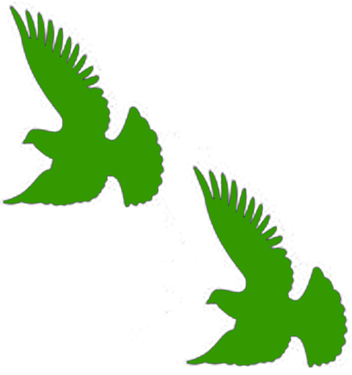Q: What is your mating procedure?
Let the cocks into the loft without their hens. Have all nest boxes open and more nest boxes than cocks. After a day or so, you will see the cock birds starting to go to the same nest. Start locking off the unused nests. By evening, or the next day at the latest, one nest to a customer. If in doubt, watch where they choose to sleep. Close all the remaining nests off. If you do not close the nests, they will bounce from nest to nest and a cock will take over 2 and sometimes 3 nestboxes.
In the future, when you add a new pair of birds, you give them an unused nest and in this way there will be no fighting for territory.
In a day or two, close all the cock birds into their nests. Bring in one hen and turn her loose in the loft. Then open the nestbox of her assigned cock bird. Within a half hour or so, they will both be in the nestbox. Close them in and bring in the next hen and open her mate's nestbox. Repeat this process until all the birds are in their nestboxes.
You then give one pair at a time the freedom of the loft and alternate them. In a day or two you can let two pair out at the same time but in opposite sides or corners of the loft (in other words, not in adjoining nestboxes). You will soon have them all settled in with no confusion or fighting.
If you want to mate the birds at this time, you can just leave them in the loft together. If you are not mating the birds yet, you can get them used to this process, but then separate into the 2 lofts that they are in originally. One thing that might slow down early mating is the lack of light. Light controls the hormonal cycle of birds and animals. In other words, pigeons (or most birds) need a minimum of 14.5 hours of light per day in order to trigger their mating and egg-laying cycles.
Day 5 of the mating cycle is probably the most critical. The hen will mate with almost any cock. That is why you see the cock bird drive the hen to the nest. It is to keep her away from other male birds.
Once the birds are mated, the hen will lay her first egg on the evening of the 8th or 9th day. The first egg is normally laid approximately 5 p.m. The following day, the pair just hovers over the egg. The second day, the second egg will be laid at approximately 10 a.m. Incubation will then begin.
The birds rotate their time on the nest. The hen sits from late afternoon until maybe 9 a.m. The cock takes a daytime shift. At 17 days, both youngsters should hatch. It is a good idea to mark on a calendar when the 2nd egg has been laid. In this way, you know when to expect hatching to take place.
When the eggs are approximately 5 days old, you can candle them -- that is, you can hold the egg up to a light bulb and you will see the blood veins or the embryo starting to form. By the 8th or 10th day, the egg will have a dark appearance when all is well.
